Showing 691–700 of 1173 results

The book presents the essence of the philosophy of Narayana Guru, the noted philosopher-saint of modern India who reintroduced the essential Upanisadic content with a fresh appeal. Based on a thorough study of his works, it deals with his thought on ethics, aesthetics, religion, rituals and casteism.
Narayana Guru (1854-1928), a much-revered philosopher-saint of South India, revisualised the essential Upanisadic thought with a freshness of perspective. Further, he applied basic aspects of his Upanisadic philosophy successfully to bring about radical social transformations. This book deals with his philosophy as discussed in his major work, Atmopadesa Satakam (One Hundred Verses of Self Instruction) but incorporates views and ideas from his other works as well. The work focuses on Narayana Gurus philosophic thought dealing with the meaning of Vedanta, the way to seek Reality, the role of the individual in life, and karma, maya, the atma’s (self-)manifestation and sat-cit-ananda as the definition of the atma or Brahman and as the final goal. The various concepts are explained in relation to one another and from the viewpoint of achieving the final goal in life to present a unified thought construct that forms the core of Narayana Gurus philosophy. It also takes up the application of his Upanisadic philosophy in different disciplines like ethics and aesthetics and in practice of religion, temple-related matters and rites. The book will be particularly useful to scholars, teachers and students of Vedanta as well as all educated seekers of Reality.

Noted Indian philosophers present an open-minded evaluation of Wittgensteins philosophy of language from fresh perspectives to bring out its contemporary significance. They examine Wittgensteins theories on the limits and structure of language, operationalism in philosophy of language, idea of a private language, necessity of mathematics and logical truths, and grammar of the language of emotions.
The book is open-minded evaluation of Wittgensteins philosophy of language from fresh perspectives to bring out its contemporary significance. Including papers presented by noted Indian philosophers at a naional seminar, it examines the special place of WIttgenstein in the development of philosophy in the West in the twentieth century. The papers offer an in-depth critique of Wittgensteins theories on the limits and structure of language, operationalism, in philosophy of language, idea of a private language, necessaity of mathematics and logical truths, grammer of the language of emotions and language as a liberating force. Throughout the attempt is to analyse Wittgensteins contributors vis-a-vis Indian philosophical thinking and trace and the similarities between him and Indian thinkers. The work, for instance, includes a detailed study of Wittgensteins notion of silence and its affiliations with silence as interpreted in the Nyaya system and identifying the common factors in Gandhi and Wittgensteins approach to western civilisation. It also presents a radically different understanding from what is traditionally understood of the Wittgensteinian concept of picture. The work will prove immensely useful to scholars concerned with linguistic representation and meaning in general and Wittgensteins contributors to philosophy of language in particular.

Using case studies from pilgimages around the world undertaken by the devout, the volume explores the ways many of the pilgrimage traditions have started and evolved. The book deals with pilgrimages not only in India but also in several countries abroad.
Pilgrimage involves movement of people, either as individuals or as members of a group, in search of the sacred. Spontaneous behaviour, miraculous events, and/or ecstatic visions of individual pilgrims have often resulted in complexity in ritual, meaning, and movement. Pilgrimages may start with individual ecstatic visions, unusual strange unworldly experiences, which are the experiences of ordinary people, certainly not of priests or politicians. Often they are uniquely human experiences which embarrass ecclesiastical authorities.
As a pilgrimage tradition evolves, sacred sites may become formalized in organized socio-political systems with economic overtone. Even in these structured situations, individual people may still have powerful individual experiences. Eventually a pilgrimage tradition may be taken over by religious and political authorities, lose spontaneity, and become frozen in time. But even in these situations, in which large numbers of people may gather, there is a tremendous amount of primal energy in which innovations and visions may be evoked.
Using case studies from pilgrimages around the world, the volume explores the ways many of these traditions have started and evolved. A common perspective is that of self-organization of complex structures in space and time.
The variety of pilgrimage described in the book is remarkable. The subcontinent of India is the location of many sites such as the temples to the nine planets in Tamil Nadu, the pilgrimage circuits of Varanasi, early Buddhist pilgrimages in Sanchi and Bodh-Gaya, the great ruined city of Vijayanagara, those associated with the Ramayana, and the death ceremonies at Gaya. Beyond India, the self-organization and stability of pilgrimage systems are analysed for pilgrimages in Nepal (Kathmandu), Japan, Mexico, the Caribbean, Peru, Norway, and the US.
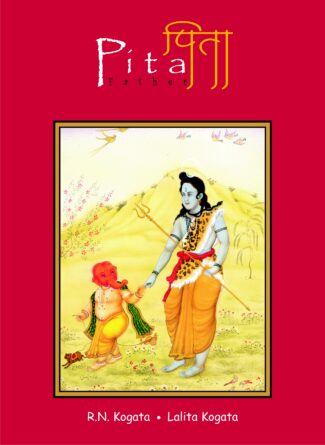
From time immemorial a family Þ consisting of father, mother, son, his wife, and their childern Þ has been accepted as a sacred institution in all societies Þ urban, rural, tribal or uncivilized, or even among animals to a certain extent. In the family, besides love and affection, the main factors cementing the bond between members are some virtues and morals like obedience, faithfulness, honesty, and, above all, chastity, not only for women but also for the men. In Hindu thought Lord Shiva and Goddess Parvati are considered the ideal parents as well as the ideal couple. In four books Þ Pita, Maa, Pati and Patni Þ pleasingly embellished with self-explaining paintings, Mr K.N. Kogata and Mrs Lalita Kogata have extolled the roles, activities, and moods of these important members of the first family with charming and delightful verses.
Taittiriya Upanishad says, Pitru devo bhava consider your father as a god. We owe our existence to our father and mother, and in that sense they are our creators and therefore, gods. We cannot see God, the Creator of this universe, in person and offer our respects to Him. To make matters easy for us, God created father and mother and presented them before us in flesh and blood. By serving our father and mother we can pay back at least a little portion of the debt we owe to God for our existence and for the stage we have reached in life. Our epics, Puranas, Upanishads, etc. all extol the father as of utmost importance in society. Subhashita Manjari mentions five persons who are to be treated as father one who gives birth, one who initiates, one who teaches, one who feeds, and one who protects us from fear. Practically speaking, our biological father does all these five activities he is the cause of our birth, he initiates us as a brahmachaari by performing the Upanayanam ceremony, he teaches us how to live in the world with honour and dignity, he feeds us, and he protects us, his children, from all kinds of fear. As such, our efforts to serve and please our father should be fivefold. Aadi Shankaraachaarya sees, in Annapurnaashtakam, Lord Shiva and his consort Parvati as father and mother. In a similar way, the Kogatas have seen Shiva as the universal father and portrays him in the book along with mother Parvati in different activities and moods in pleasing illustrations which are further beautified by sweet and delightful verses.
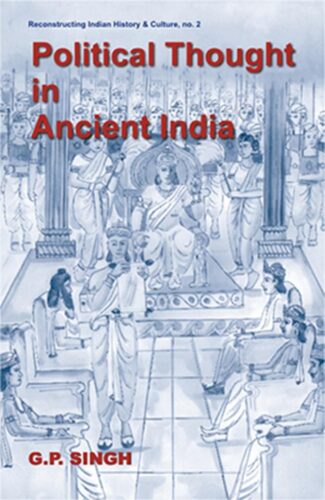
Professor G.P. Singh tries to crystallize the political thought-processes accompanying the evolution of state in the bygone centuries. He dwells on the time-honoured components of the Saptanga theory and their role in supporting the state.
Ancient Indians were a highly organized polity, with a well-established worldview of the Rajya (the State). And also of its seven distinct organs: svamin (the king), amatyas (the ministers), janapada/rashtra (the territory and the people), durgas/pura (the forts/capital), kosha (the treasury), danda/bala (the army), and mitra tatha niti (the allies and inter-state relations). In their togetherness, these components of the state led political ideologues to advance the Theory of Saptanga : the seven limbs each of which admitted varying emphases with ancient scholars, according to the changing political situations or their own predilections. Besides traditional/semi-historical writings, the Saptanga Theory of State finds recurring allusions in Kautilyas Arthashastra which, written sometime about the fourth century BC, remains the oldest surviving treatise of its kind on statecraft. Surprisingly, the Arthashastra itself, claims its author, is a compendium of the writings of as many as eighteen ancient teachers, like Manu, Brihaspati, Ushana, Bharadvaja, Vishalaksha, Prachetas, and Pishuna. With bit-by-bit analysis of an astonishing mass of original, indigenous sources: Vedic, puranic, epical, Buddhist, Jaina, and even non-Indian, Professor G.P. Singh tries to crystallize the political thought processes accompanying the evolution of state through the bygone centuries. Bringing fresh insights into the Saptanga Theory, his study dwells, at length, on all its seven time-honoured components and their variegated roles in lending support to the state. Also underscored here is the relevance of ancient Indian view to modern theories of politics and diplomacy. A thoroughly documented work of equal utility to scholars and students, the monograph is supplemented by a comprehensive index and a glossary of non-English words/ phrases used in the text.
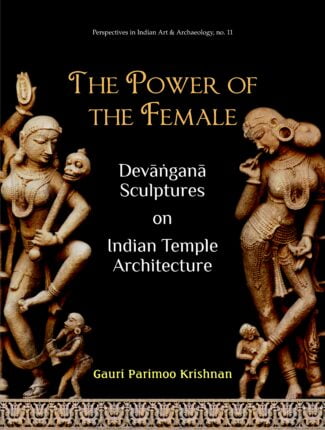
Sculptures of numerous engaging devanganas the surasundari, apsaras and alasakanya figures decorate walls, ceilings and doorways of classical structures in India. The book offers dynamic meanings of these figures in religious and cultural consciousness of India and how they symbolize and illustrate the power of the female in Indian traditions.
This book is an offering to New Art History taking the study of Indian classical sculptural art and traditional Indian iconography to newer heights of interpretation. Sculptures of female figures in classical Indian architectural traditions have enjoyed a special placement and significance. Numerous engaging images of devanganas the surasundari, apsaras and alasakanya figures decorate walls, ceilings and doorways of Hindu temples in India. Viewing the devangana sculptures as a continuation of the yaksi sculptures of Buddhist and Jaina monuments and the concept of primordial mother goddesses of the Vedic times, this challenging work on the devangana sculptures studies the morphology, iconology and semiotic meanings of the devangana figures and their placement in monuments of Gujarat, Rajasthan and Madhya Pradesh between the eighth and twelfth centuries ce.
In a path-breaking effort, the work focuses not on the much-discussed erotic and sexual connotations but explores their dynamic meanings in the religious and cultural consciousness which help to symbolise ßthe power of the femaleû in representational artistic traditions of India. For this, copious architectural and religious texts are examined. With more than 250 illustrations of temple sites and detailed sculptures, this book enquires into the imagery of these figures. A significant aspect of the research is its critiquing of the existing literature on the subject to come up with novel viewpoints and use of tools like dhvani theory, psychoanalysis and feminism to interpret the devangana sculptures.
The book will benefit young researchers, cultural enthusiasts and erudite scholars of Indian art and architecture focused on religious and cultural significance of Indias sculptural heritage.
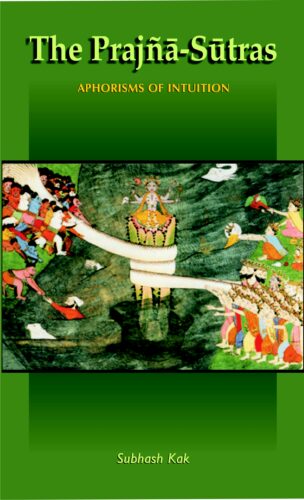
The book presents a bridge between the cosmologies of Vedic knowledge and modern science. Commentaries are provided in 18 sutras on the nature of reality, language, art, mind, transformation and freedom. The sutras deal with abstract ideas, including aesthetics, love, war and suffering.
The Prajna Sutra presents a bridge between the cosmologies of Vedic knowledge and modern science. The ideas are presented as 18 sutras on the nature of reality, language, art, mind, transformation, and freedom on which explanatory commentaries are provided. The sutras tie together common symbols of the Vedic tradition and their deeper intuitions using contemporary vocabulary. The synthesis presented in the sutras is wide-ranging and it not only deals with abstract ideas but also with questions of meaning, aesthetics, love, war, and suffering. Although some consider only linguistic problems to be worthy of study, linguistic expressions ultimately are about things and they cannot properly address the mystery of consciousness. The sutras consider issues that go to the core of philosophy, namely the nature of reality and the relationship of the experiencing subject to it. They speak of the complementary domains of rationality and paradox that underlie ordinary experience. They explain how the mystery of consciousness relates not only to the individual’s cognitive capacity to know but also his ability to transform both himself and his environment.
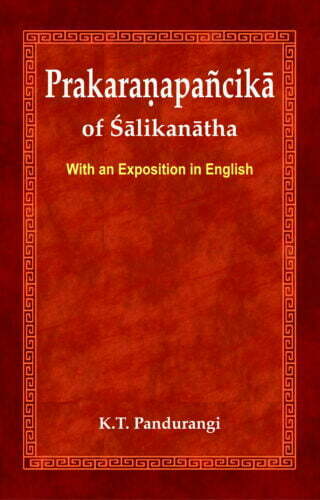
The book of Purva-Mimamsa presents a detailed account of the Prabhakara system and explains the eight main issues in which the other systems of Indian philosophy do not agree with the Prabhakaras. Prabhakara thoughts are here undertaken in the light of modern developments in the areas of epistemology and linguistics.
Prakaranapancika of Salikanatha is an important text of Prabhakara Mimamsa. Salikanatha who is a direct disciple of Prabhakara made distinct contribution to Indian Epistemology and linguistics. The concepts of Svaprkashatva of cognition, Triputikarana formula, Akhyati theory of perceptual error are some of his important contributions in the area of epistemology, whereas anvitabhidhanavada, a theory of sentence meaning, the concept of Karya i.e., Niyoga as the import of injunction, the inclusion of Pauruseya statements under the inference are considered as his important contributions in the field of linguistics.
Nyaya and Bhafta Mimamsa strongly criticize all these concepts, but Vishistadvaita and Dvaita schools are a little friendly in some respects. We are sure that a study of Prakbhakara thought in the light of modern developments in the area of epistemology and linguistics will be fruitful.

This 5-volume set, first of its kind, produced by the most distinguished specialists in the field, should enjoy a wide readership amongst philosophers of many different persuasions, scientists, theorists of art and culture, particularly ecologists and anthropologists seeking new insights into the phenomena of Nature.
PRAKRTI : The Integral Vision explores the concept of the primal Elements (Sky, Air, Fire, Water, Earth, etc.) which has governed and determined the evolution of civilizations and cultures. This 5-volume collection is the outcome of a series of five successive but inter-locked seminars culminating into cross-cultural, multi-disciplinary understanding. The First Volume, Primal Elements: The Oral Tradition, focuses attention on the articulation of cohesive communities communicating with the Elements in continuous unceasing dialogue. To them the nature is not a matter of intellection; it is a question of life here and now. This is manifested in their primary myths and rituals which sacralize nature so that man can live as an integral part of the Universe. The Second Volume, Vedic, Buddhist and Jain Traditions, centres on the texts, probing deep into the Vedic rituals, Upanisadic philosophies and Jyotisa sastra. There is a prodigious consideration of the concept of maha-bhutas in Buddhism and Jainism. It also brings forth the many covergences and divergences of the view-points between and amongst these different streams of Indian thought. The Third Volume, The Agamic Tradition and the Arts, examines systematically the manifestation of the Elements in the Indian arts and their Agamic background. From the different vantage points of the architect, sculptor, painter, musician and dancer, the field is reopened here to discern the structure of the arts at its primal level. Experiences of the transformation of the gross to the subtle and the theories of aesthetics and cultural ecology emerge from such a captivating view-point. The Fourth Volume, The Nature of Matter offers a much-needed critical appraisal of modern scientific concepts with reference to traditional thoughts. It contains invaluable discussion on quantum theory and elementary particles, evolution of living matter, nature and function of matter, scientific philosophy and Buddhist thought, Sankhya theory of matter, ancient and medieval biology, mysticism and modern science, traditional cosmology, matter and medicine, matter and consciousness, etc. The dialogue created between the method of science and the method of speculation is invigorating. The Fifth Volume, Man in Nature, is a coming together of cultures and disciplines. Enchanting in their own way, the international community of scientists, philosophers, anthropologists, ecologists and artists, share in this volume the myths and cosmology of their respective societies and cultures. There emerges a most meaningful dialogue between those who live with the myths of primordial elements and those who have modified the tools of science to investigate the nature of matter. This 5-volume set, first of its kind, produced by the most distinguished specialists in the field, should enjoy a wide readership amongst philosophers of many different persuasions, scientists, theorists of art and culture, particularly ecologists and anthropologists seeking new insights into the phenomena of Nature.

The Fourth Volume, The Nature of Matter offers a much-needed critical appraisal of modern scientific concepts with reference to traditional thoughts. It contains invaluable discussion on quantum theory and elementary particles, evolution of living matter, nature and function of matter, scientific philosophy and Buddhist thought, Sankhya theory of matter, ancient and medieval biology, mysticism and modern science, traditional cosmology, matter and medicine, matter and consciousness, etc. The dialogue created between the method of science and the method of speculation is invigorating.
PRAKRTI : The Integral Vision explores the concept of the primal Elements (Sky, Air, Fire, Water, Earth, etc.) which has governed and determined the evolution of civilizations and cultures. This 5-volume collection is the outcome of a series of five successive but inter-locked seminars culminating into cross-cultural, multi-disciplinary understanding. The First Volume, Primal Elements: The Oral Tradition, focuses attention on the articulation of cohesive communities communicating with the Elements in continuous unceasing dialogue. To them the nature is not a matter of intellection; it is a question of life here and now. This is manifested in their primary myths and rituals which sacralize nature so that man can live as an integral part of the Universe. The Second Volume, Vedic, Buddhist and Jain Traditions, centres on the texts, probing deep into the Vedic rituals, Upanisadic philosophies and Jyotisa sastra. There is a prodigious consideration of the concept of maha-bhutas in Buddhism and Jainism. It also brings forth the many covergences and divergences of the view-points between and amongst these different streams of Indian thought. The Third Volume, The Agamic Tradition and the Arts, examines systematically the manifestation of the Elements in the Indian arts and their Agamic background. From the different vantage points of the architect, sculptor, painter, musician and dancer, the field is reopened here to discern the structure of the arts at its primal level. Experiences of the transformation of the gross to the subtle and the theories of aesthetics and cultural ecology emerge from such a captivating view-point. The Fourth Volume, The Nature of Matter offers a much-needed critical appraisal of modern scientific concepts with reference to traditional thoughts. It contains invaluable discussion on quantum theory and elementary particles, evolution of living matter, nature and function of matter, scientific philosophy and Buddhist thought, Sankhya theory of matter, ancient and medieval biology, mysticism and modern science, traditional cosmology, matter and medicine, matter and consciousness, etc. The dialogue created between the method of science and the method of speculation is invigorating. The Fifth Volume, Man in Nature, is a coming together of cultures and disciplines. Enchanting in their own way, the international community of scientists, philosophers, anthropologists, ecologists and artists, share in this volume the myths and cosmology of their respective societies and cultures. There emerges a most meaningful dialogue between those who live with the myths of primordial elements and those who have modified the tools of science to investigate the nature of matter. This 5-volume set, first of its kind, produced by the most distinguished specialists in the field, should enjoy a wide readership amongst philosophers of many different persuasions, scientists, theorists of art and culture, particularly ecologists and anthropologists seeking new insights into the phenomena of Nature.
| There are no products |